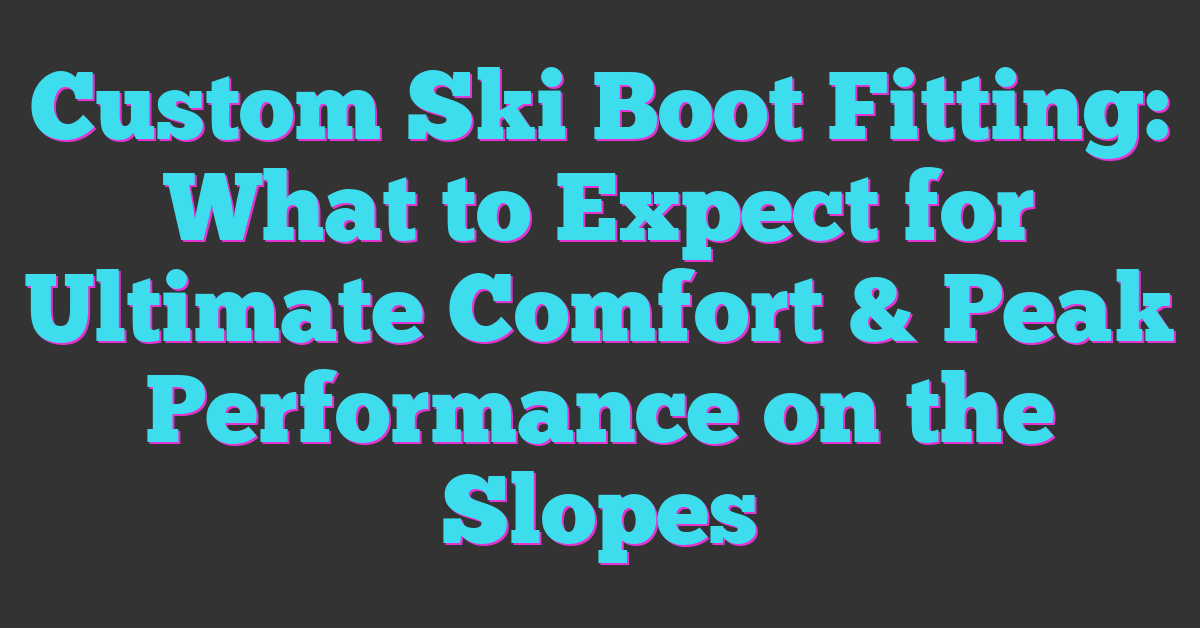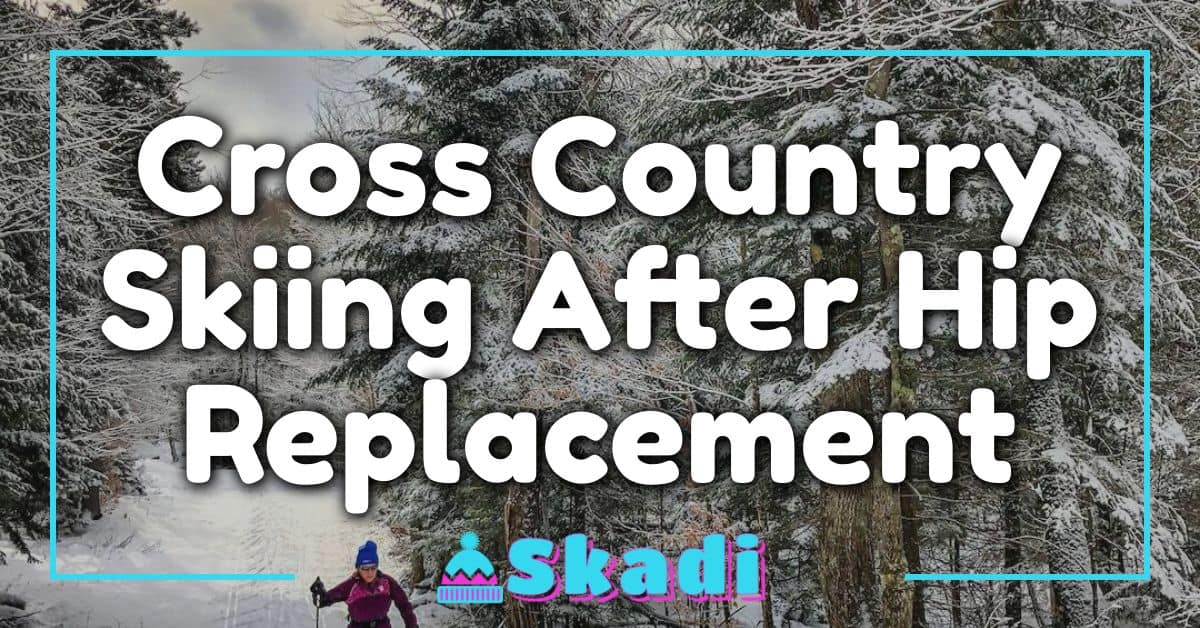Skiing’s one of my favorite ways to embrace winter, but nothing ruins a day on the slopes faster than uncomfortable boots. If you’ve ever dealt with pinched toes or achy feet, you know exactly what I mean. That’s where custom ski boot fitting comes in—it’s a total game-changer for comfort and performance.

Understanding Custom Ski Boot Fitting
Custom ski boot fitting involves tailoring ski boots to match your feet perfectly, ensuring a seamless fit for both comfort and performance. As someone passionate about winter sports, I can’t overstate its impact on the skiing experience.
What Is Custom Ski Boot Fitting?
Custom ski boot fitting includes a detailed analysis of your feet and adjustments to match their shape and biomechanical needs. Specialists use tools to assess foot size, arch height, and pressure points. They may modify shell shape, liner padding, and footbeds to create a personalized fit. For example, options like heat-moldable liners or canting adjustments enhance alignment and support.
Why Is It Important for Skiers?
Proper fit minimizes pressure points, reducing discomfort during long days on the slopes. A custom fit also improves ski control by enhancing power transfer from feet to skis. When boots fit snugly without pinching, you stay focused on performance instead of pain. For me, having custom-fitted boots boosted my confidence and made carving down runs much smoother.
The Custom Ski Boot Fitting Process
Getting custom ski boots transformed my skiing experience. Each step in the fitting process ensures your boots work seamlessly with your feet, maximizing comfort and control.
Initial Consultation and Assessment
The process starts with a detailed consultation. A boot fitter asks about your skiing style, experience level, and preferences. For me, sharing my love for aggressive runs and backcountry adventures helped tailor the fitting to my needs. They also check your existing gear to identify any problem areas.
Foot Measurements and Analysis
Accurate measurements come next. My fitter used tools to measure foot length, width, arch height, and even calf shape. A thorough analysis of my stance and alignment revealed patterns, like slight pronation, impacting my comfort and control.
Selecting the Right Boot Components
Choosing the right components is essential. The fitter recommended boots matching my foot profile and skiing goals. For example, they considered the flex index, shell width, and cuff height to complement my aggressive skiing style and unique foot shape.
Customization and Heat Molding
Customization begins with heat molding. My liners and shells were heated to conform to my foot’s shape. This step removed pressure points and created a snug, supportive fit. They even made personalized footbeds to enhance arch support and balance.
Final Adjustments and Fit Testing
Final tweaks ensure perfection. I wore the boots and mimicked skiing movements to test the fit. My fitter identified minor issues, like slight heel lift, and made precise adjustments to the shell and liners. Afterward, I felt completely locked in and ready for any run.
Each step was meticulous and tailored to me. It’s why I recommend custom ski boot fitting to anyone passionate about skiing.
Benefits of Custom Ski Boot Fitting
Custom ski boot fitting transformed my time on the slopes. It’s more than a luxury; it’s an essential upgrade for comfort, performance, and long-term benefits.
Enhanced Comfort and Performance
A precise fit completely eliminates pressure points and hotspots. My boots now feel like an extension of my feet, boosting control and precision whether I’m carving tight turns or tackling challenging terrain. The personalized footbeds and molded liners ensure every movement translates directly into ski control. With this optimization, I’ve noticed smoother transitions and better energy transfer, making long ski days far more enjoyable.
Injury Prevention and Support
Properly fitted boots provide essential support by maintaining correct alignment and foot stability. Before custom fitting, I dealt with aches from poor arch support and improper stance alignment. Now, my boots work with my body, reducing strain on knees and ankles. This alignment minimizes fatigue and lowers injury risk, keeping me confident and safe even on aggressive runs.
Longevity and Durability
Custom boots last longer because they’re tailored to my feet, reducing wear from unnecessary tension or improper fit. Since high-quality materials are molded specifically for me, I experience consistent performance season after season. Over time, I’ve saved money by avoiding frequent replacements and unnecessary tweaks, making the investment worthwhile for any serious skier.
Things to Consider Before Booking a Custom Fitting
Finding the perfect ski boots changed how I experience the slopes. Before scheduling a custom fitting, there are several key factors to understand to ensure the process goes smoothly.
When Should You Get Custom Ski Boots?
Timing is everything when it comes to custom ski boots. I recommend starting this process before the ski season begins or soon after it starts. Early fittings mean more time to break in your boots and make any necessary tweaks. If you’re preparing for a trip or competition, plan the fitting at least a few weeks ahead to allow ample adjustment time. Waiting until mid-season could limit availability with fitters or lead to rushed adjustments.
Choosing the Right Professional Fitter
A skilled fitter makes all the difference. I always research thoroughly, checking reviews, credentials, and recommendations from other skiers. Look for someone who specializes in custom fitting, not just selling ski gear. Personal experience taught me that visiting a shop with advanced tools, like pressure analysis and heat-molding systems, ensures the best results. Don’t hesitate to ask about their experience and techniques before booking an appointment.
Budget and Investment
Custom ski boots are an investment in comfort and performance. Costs often range between $800 and $1,500, depending on the level of modification and brand. For me, the enhanced experience and longevity of tailored boots outweigh the initial expense. Keep in mind, custom footbeds or liners may be additional charges, so clarify these extras during the consultation. I like to view it as a long-term upgrade that saves money by reducing the need for replacements or adjustments.
Conclusion
Custom ski boot fitting has been a game-changer for my time on the slopes. The combination of comfort, performance, and long-term benefits makes it an investment I’d recommend to any skier looking to elevate their experience. Finding the right fitter and taking the time to go through the process is absolutely worth it. Once you’ve experienced the difference, there’s no going back.
















